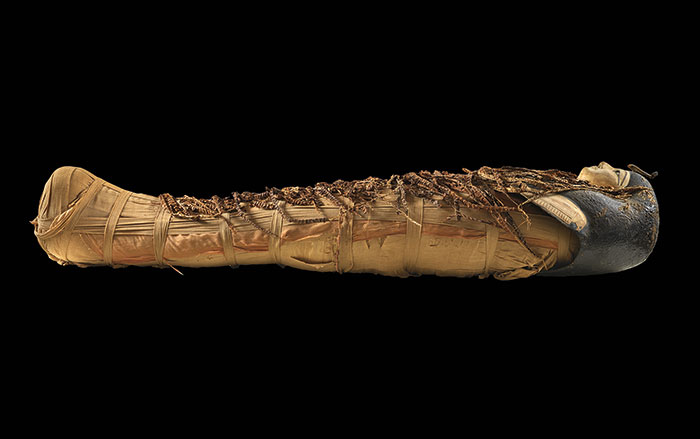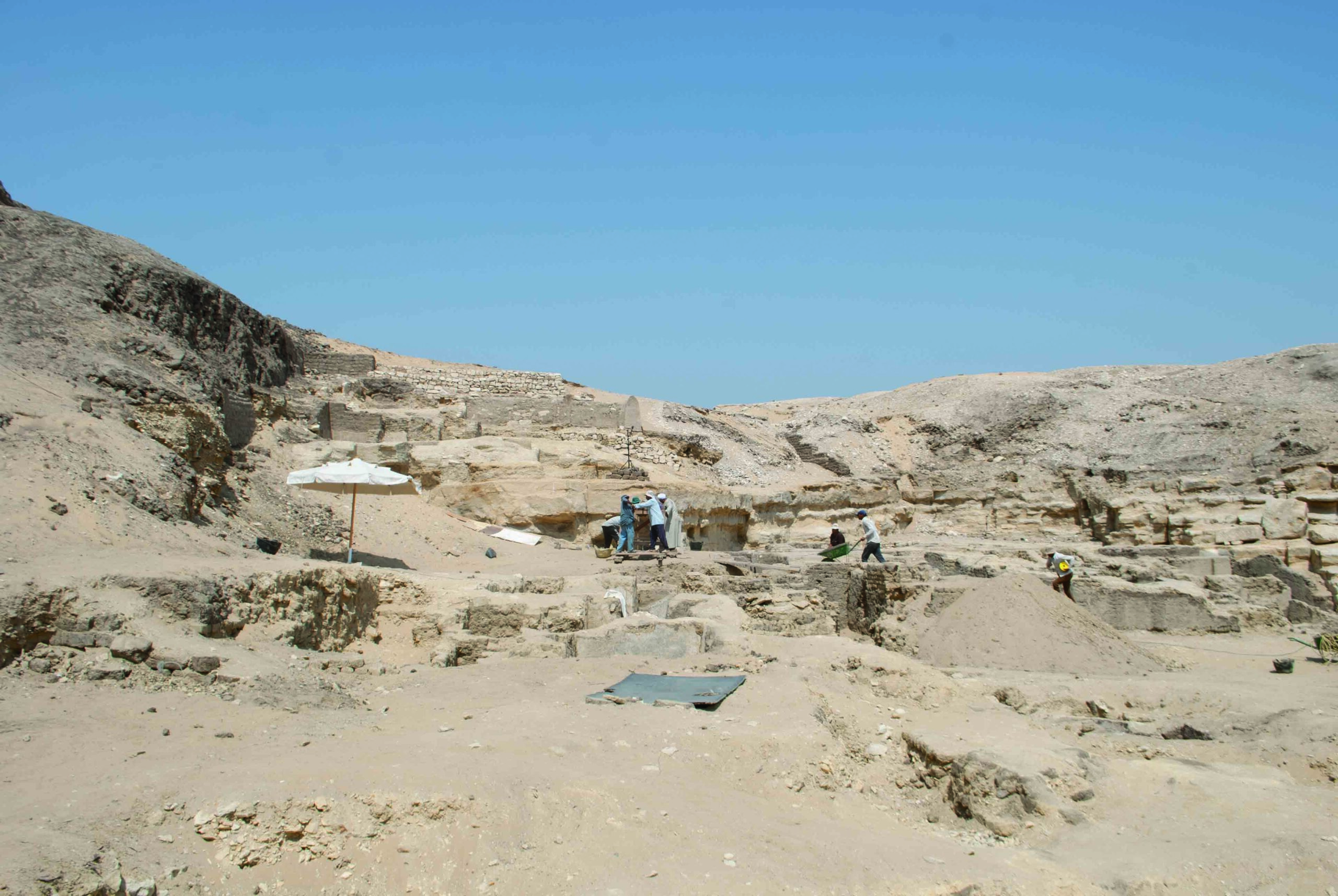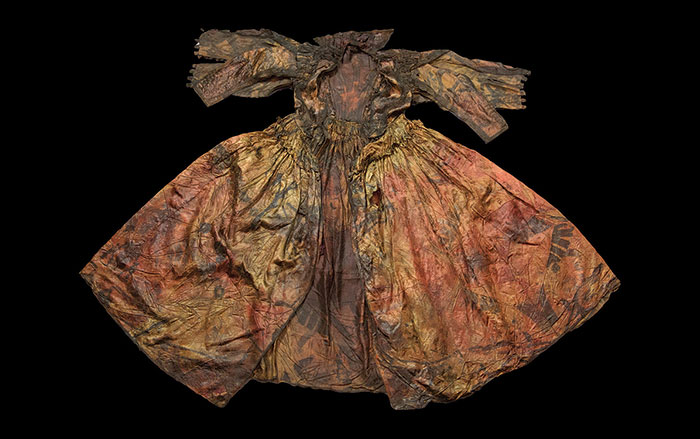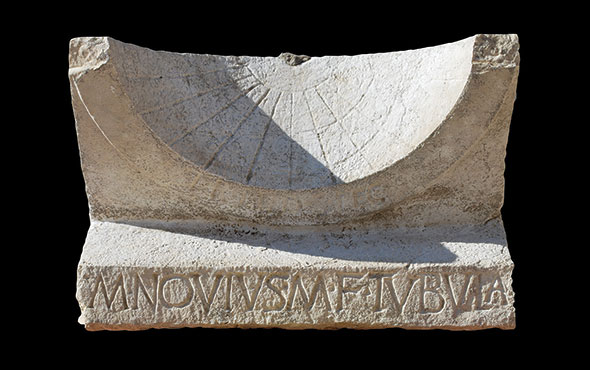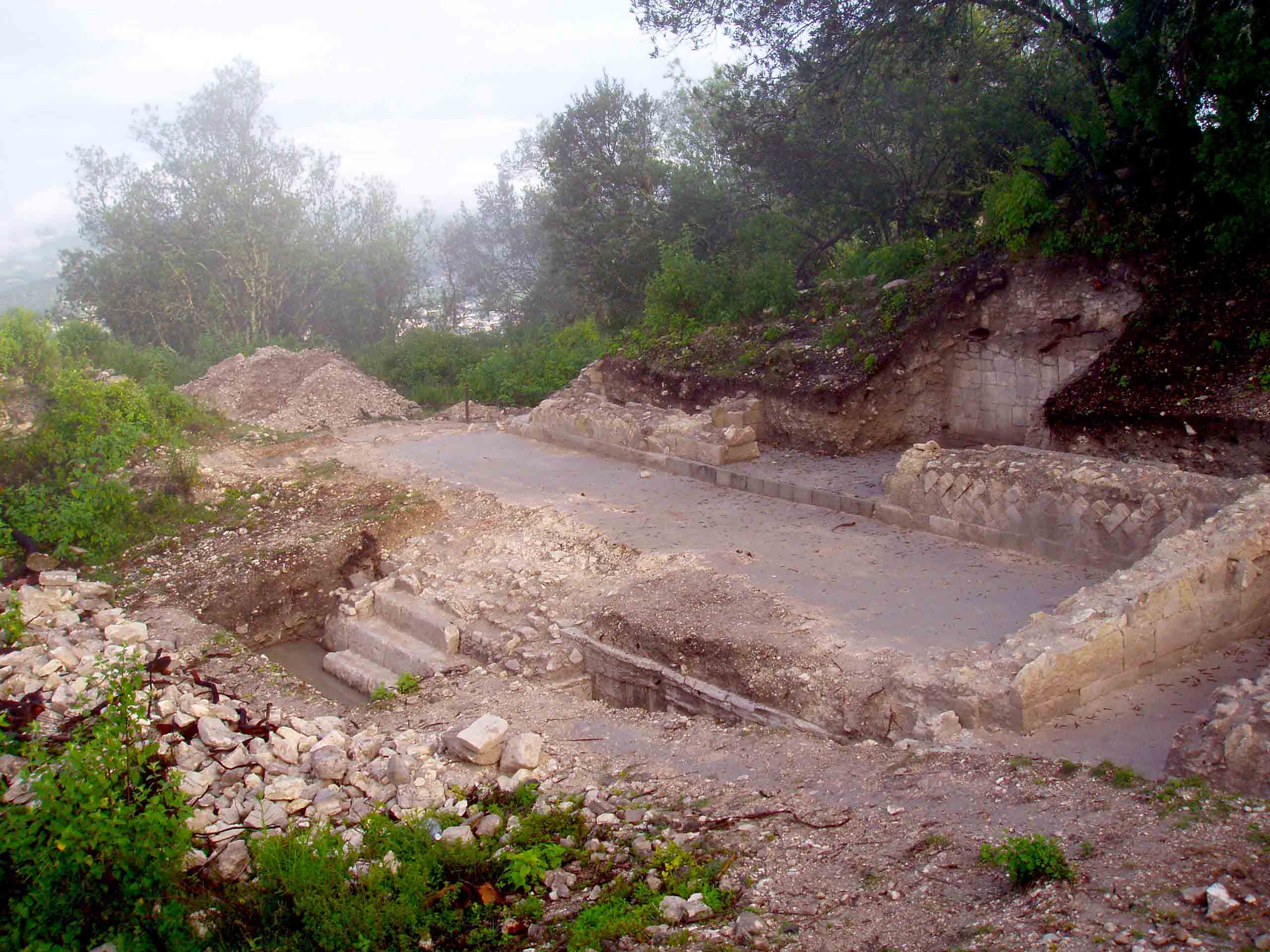
GIZA, EGYPT—The Associated Press reports that a 2,500-year-old mummification workshop and a 100-foot-long burial shaft lined with burial chambers carved into the bedrock have been excavated at Saqqara. One of the burials consists of a badly damaged wooden coffin containing a mummy wearing a gilded silver mask, thought to have belonged to the second priest of Mut. “Very few masks of precious metals have been preserved to the present day, because the tombs of most ancient Egyptian dignitaries were looted in ancient times,” said Ramadan Hussein of the German-Egyptian archaeological mission that conducted the excavation. The workshop held embalmer’s tools, including pottery vessels and measuring cups. Traces of oils used in the mummification process during the 26th Dynasty may be found on the jars. “We are in front of a gold mine of information about the chemical composition of these oils,” Hussein explained. Fragments of mummy cartonnages, canopic cylindrical jars, and marl clay and faience cups were also recovered. To read about another recent discovery at Saqqara, go to “Queen of the Old Kingdom.”



